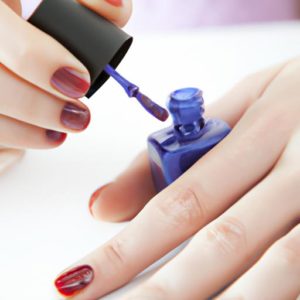Table of Contents
Pincer nail, also known as trumpet nail or omega nail, refers to a condition where the nail plate bends inward and compresses the nail bed. This condition can cause discomfort, pain, and even lead to infection if left untreated. In this article, we will delve into the origins, diagnosis, and non-surgical strategies available for correcting pincer nail.
What Causes Pincer Nail?
Pincer nail can stem from various factors, including genetics, the aging process, and underlying medical conditions. Wearing excessively tight or ill-fitting shoes is one of the primary causes, as it puts pressure on the toes and disrupts normal nail growth. Trauma to the nail, fungal infections, and arthritis may also contribute to the development of pincer nail.
Diagnosing Pincer Nail
A podiatrist or dermatologist can perform a physical examination to diagnose pincer nail. During this assessment, the doctor will scrutinize the nail for signs of curvature, thickening, and discoloration. In some cases, an X-ray may be necessary to evaluate the structure of the toe bones.
It is crucial to seek medical attention promptly if you suspect you have pincer nail. Early diagnosis and treatment can prevent further complications and alleviate discomfort.
In severe cases, non-surgical treatments may not be sufficient, and surgical intervention may be required. There are several surgical options available, including partial nail avulsion, total nail avulsion, digital arthroplasty, and distal phalanx osteotomy.
Non-Surgical Approaches
Before considering surgery, non-surgical techniques can be employed to alleviate the symptoms of pincer nail. Modifying footwear by opting for wider shoes reduces toe pressure and prevents further nail curvatures. Orthotic devices like toe spacers can also be beneficial in preventing nail compression.
Another non-surgical method for pincer nail correction is nail filing. This involves gently filing down the nail to reduce curvature and alleviate pressure on the nail bed. Soaking the affected toe in warm water can also help soften the nail, making it easier to file.
Surgical Treatments
If non-surgical treatments prove ineffective, surgical intervention may become necessary. Partial nail avulsion involves the removal of a portion of the nail, while total nail avulsion entails removing the entire nail. Digital arthroplasty entails the removal of a section of bone to reduce pressure on the nail, and distal phalanx osteotomy involves reshaping the bone to prevent inward nail curvature.
It is crucial to consult with a podiatrist or dermatologist before deciding on surgical treatment. They can assess the severity of the condition and your overall health to determine the most suitable course of action.
Home Remedies
In addition to non-surgical and surgical treatments, several home remedies may offer relief for pincer nail symptoms. Tea tree oil, with its antifungal properties, can help prevent infection. Epsom salt can aid in nail softening and reducing inflammation. Vitamin E oil promotes nail growth and prevents further curvature. Apple cider vinegar can also be utilized to prevent infection and reduce inflammation.
While home remedies can be effective, it is essential to consult with a healthcare professional before attempting any new treatments. Some remedies may interact with medications or worsen underlying medical conditions.
Non-Surgical Treatments for Pincer Nail
Non-surgical treatments for pincer nail serve as the initial line of defense against the condition. These treatments aim to alleviate symptoms and prevent further nail curvatures.
Shoe Modifications
One highly effective non-surgical approach for pincer nail is shoe modifications. Wearing wider shoes helps reduce toe pressure, thus preventing further nail curvatures. Avoiding high heels and shoes with narrow toe boxes can also alleviate discomfort and pain.
Utilization of Orthotics
Orthotic devices such as toe spacers can also be employed to alleviate pincer nail symptoms. These spacers separate the toes, reducing pressure on the nail and preventing additional curvature. They can be worn with or without shoes and can be obtained over the counter or custom-made.
Nail Filing
Nail filing is another non-surgical method for pincer nail correction. It involves gently filing down the nail to reduce curvature and relieve pressure on the nail bed. To avoid further nail damage, it is crucial to use a fine-grit file and file in one direction. Nail filing can be carried out at home or by a podiatrist.
Soaking in Warm Water
Soaking the affected toe in warm water can also help alleviate pincer nail symptoms. This technique softens the nail, making it easier to file and reducing pain and discomfort. Adding Epsom salt or tea tree oil to the water can further reduce inflammation and prevent infection.
Surgical Treatments for Pincer Nail
If non-surgical treatments prove ineffective, surgical intervention may be necessary for pincer nail correction. Options include partial nail avulsion, total nail avulsion, digital arthroplasty, and distal phalanx osteotomy.
Partial Nail Avulsion
Partial nail avulsion involves removing a portion of the nail to alleviate pressure on the nail bed. This quick and relatively painless procedure is often performed under local anesthesia. It is typically recommended for mild to moderate cases of pincer nail.
Total Nail Avulsion
Total nail avulsion entails the complete removal of the nail to prevent further curvature and alleviate symptoms. This procedure, usually conducted under local anesthesia, may require a few weeks for recovery. Total nail avulsion is typically reserved for severe cases of pincer nail.
Digital Arthroplasty
Digital arthroplasty involves the removal of a portion of bone to reduce pressure on the nail bed. This procedure, typically performed under general anesthesia, may necessitate several weeks of recovery. Digital arthroplasty is typically reserved for severe cases of pincer nail.
Distal Phalanx Osteotomy
Distal phalanx osteotomy entails reshaping the bone to prevent inward nail curvature. This surgical procedure, usually performed under general anesthesia, may require several weeks for recovery. It is typically recommended for severe cases of pincer nail.
Consulting with a podiatrist or dermatologist is crucial before opting for surgical treatment. They can evaluate the severity of the condition and your overall health, guiding you towards the most appropriate course of action.







